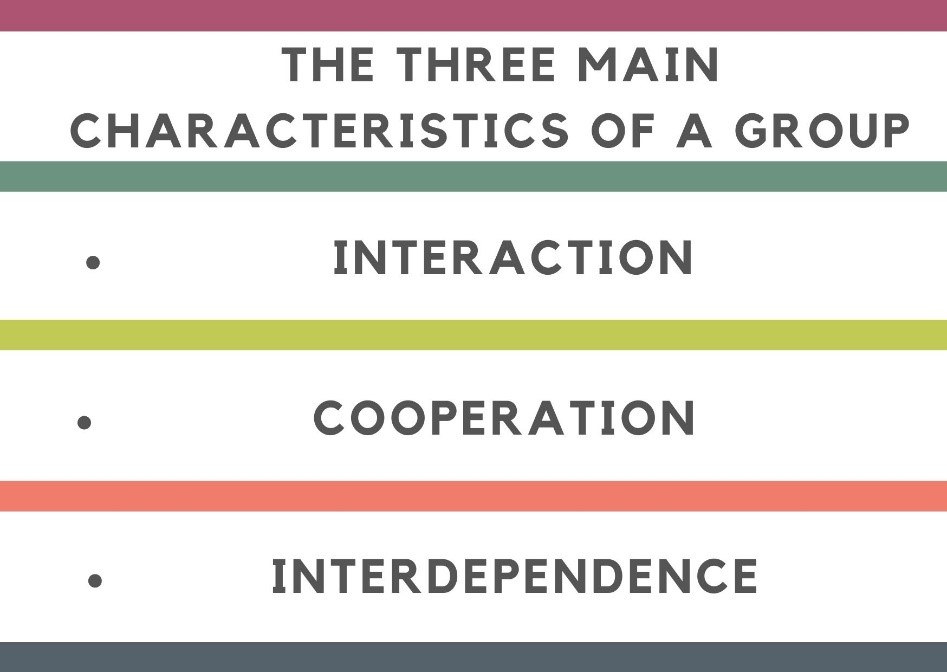Social Groups-Definitions, Examples, and Types
Introduction
Social groups are an integral part of our society. They play a significant role in shaping how we behave, what we believe, and who we identify ourselves as. A social group is any group of people that interact, share similar cultures, interests, and statuses. It is a way to categorize people according to their behavior, values, and goals. It relates to individuals; it is defined as “a person with whom one has a relationship.”
Social groups serve several essential functions in society. For example, socializing is the primary function of social groups, and it includes teaching individuals how to act in a community.
This post introduces you to the terminology around social groups and provides definitions, examples, and types for each category. The goal is to have you walk away with new knowledge about the social world around them.
However, in case you wish to skip this guide due to reasons such as a busy schedule, our ivy league writers are ready to cover you by acing that assignment for you at an affordable fee. All you have to do is place an order with us.


What Are Social Groups?
Social groups have been defined in several different ways by various theorists.
Sociologist William M. McPherson defines a social group as follows: “A social group is several individuals in interaction with one another, recognizing themselves as such, and so responding to other members’ actions.”
Other theorists define the term differently. For example, psychologist E. P. Ellsworth defines a social group as “two or more people who have some mutual understanding regarding behavior directed toward maintaining and enhancing the dialogue between the members.”
Social psychologists use several different terms to refer to groups that form in this way. Two common categories are mechanisms for social influence and fields of interest.
The former category includes formal organizations such as the family, schools, clubs, and businesses. The latter is concerned with ad hoc groups that are not primarily based around a specific structure or institution.
This concept helps explain why people belong to multiple groups simultaneously (such as friends from school and friends from work) and that people may be members of numerous groups with some degree of mutual dislike.
For example, a businesswoman might be a member of her local book club and juggling club because she enjoys being part of both on an informal basis.
One issue with the definition above is that social groups do not necessarily interact with one another. For example, living in an apartment building or a condominium does not mean that the residents of each dwelling consider themselves to interact with other residents regularly.
This has led some theorists to suggest that specific living arrangements do not count as social groups—for example, the nuclear family (consisting of two married adults and their children).


Concept of a Group?
A concept of group is a set of individuals bound into a whole by interrelations and interactions between them. Thomas suggests a concept of a group is an individual’s perception of objects as related to each other and themselves.
This interrelationship is what makes the social world more complex. It includes how individuals recognize themselves as such and respond to members’ actions. That means that they share some common culture. Thomas also states that a group is an organization with a purpose and collective responsibility. The individuals who are a part of it should contain common values to reach their goals. Moreover, the members of such groups must be committed to performing better under stress and achieving more than individual performances alone.
You may be interested in sociology paradigms
What Are the Major Characteristic of a Social Group?
The three main characteristics of a group are;
1. Interaction
Interaction is the active communication among group members in face-to-face settings or through other media such as online chat rooms and blogs.
2. Cooperation
Cooperation occurs when people give up some of their independence to achieve a goal that requires a joint effort. This is often done without concern for how this may benefit the individual in question.
3. Interdependence
Interdependence is used to describe a situation where people depend on one another. Improvement of group member’s abilities will help them develop better skills and tremendous success within their social group. Social groups can play an essential role in both the individual and society as a whole.


What is the Importance of Social Groups?
-Social groups have many positive effects on the individual. They help people form social relationships and develop friendships based on shared interests, beliefs, and values.
–Socialization is a process in which we interact with others to learn the norms, customs, and habits of society to function within it. The most important effect of joining groups is psychological well-being.
-Groups help individuals to meet their basic needs of belonging, identity, and self-esteem. For example, while interacting with other people in a group setting, individuals learn about themselves by understanding their strengths and weaknesses.
It will give them the ability to function within society and find satisfaction in life by developing new skills and becoming more successful in their everyday lives. Social groups play an essential role in the individual and society as a whole.
-Groups provide opportunities for social interaction, which results in the transmission and enculturation process—E.g. An online support group for people who have anxiety, depression, and other mental health issues.
-Members share information, knowledge, experiences, and emotions, e.g., a music group.
-The “groupthink” phenomenon is when the desire for conformity within a group causes irrational or dysfunctional behavior. Group members may wish to avoid conflict or create a sense of unity, so they go along with decisions they might not usually support. A high school cheerleader’s team is an excellent example of “groupthink.”
You may be interested in Anomie Theorem


What Are the 4 Types of Social Groups?
There are many different types of groups, and each group serves a distinct purpose. Social groups can vary in terms of stability, size, and function. Groups that share common goals or interests bind the individuals together for a particular reason.
For instance, workplaces often serve as an essential part of people’s social lives. These may be considered primary groups with members that share a great deal of interaction and overlapping relationships. Other examples of primary groups include families, schools, or clubs.
The four social groups are 1} in-groups, 2} out-groups, 3} reference groups, and 4) secondary groups.
In-groups can be considered a social group whose members have strong common bonds that identify them and separate them from others outside the group.
An in-group could be two friends who enjoy each other’s company and spend a lot of time together or two business partners who are striving to achieve the same goal.
A large city could also be considered an in-group if its citizens have developed strong bonds and feel that they share something in common.
The term out-groups refers to social groups whose members do not share strong common bonds and tend to be judged by other groups based on their differences. An out-group could be a team of people who have lost their last few games and are deemed unworthy winners. A city where most residents do not participate in the same community organizations or belong to the same clubs might also be considered an out-group.
Out-groups can exist within in-groups. For instance, an employee of a company might feel like an out-group member while he is on vacation and interacts with his family members who are only loosely connected.
Social groups whose members share common goals or interests are referred to as reference groups. A reference group can be either an in-group or an out-group.
A college student’s family can be a reference group because they share common goals and interests such as caring for one another, supporting each other in their endeavors, or planning events.
On the other hand, a high school student’s older peers might be a reference group because both she and her peers are interested in maintaining connections with one another.
A group whose members know one another only superficially is referred to as a secondary group. Secondary groups have few common interests or goals apart from essential social interaction. Examples of secondary groups include a book club, a neighbourhood watch group, or a nightclub.
Social identity is the self-image people have formed based on their various social group memberships. Social identity development refers to how people develop an understanding of themselves about their groups.
Belonging to specific groups can have a powerful effect on how we perceive ourselves and the world around us. For example, individuals who learn that they are gays may begin to feel less worthy or even immoral due to society’s negative perceptions of gays.
You may be interested in Dark Figure of Crime
What Are the Types of Group Behavior?
The types of group behavior are 1. Emotional outbreaks 2. Defensive reactions; 3. Schismatic conflicts 4. Apathetic withdrawal.
1) Emotional Outbursts – These emotional outbursts happen in a spontaneous and unorganized manner. They have no formal structure and little or no chance for growth. They can be caused by conflict, frustration, pressure, etc. These emotional outbursts are temporary; they may last a few minutes to hours.
2) Defensive Reactions – Defensive reactions are different from emotional outbreaks in that they have some degree of organization and structure. Members of the group tend to be highly suspicious of people who are different.
3) Schismatic Conflicts – These schismatic conflicts or schisms happen when a group’s members disagree on a particular issue, and these disagreements cannot be resolved.
4) Apathetic Withdrawal – These are apathetic and unresponsive members of a group that chooses to accept the actions and attitudes of other members without making any efforts to achieve their own goals.


What Are Some Examples of Social Groups?
Some examples of social groups include;
1) Family
• Nuclear family — Parents and their children. A nuclear family consists of two married adults and dependent children.
• Extended family — Parents and their children, and the parents’ siblings, adult children, and other relatives.
2) Friends or neighbors we interact with quite often.
• People who play together in a band are social groups that satisfy the need for affiliation since they bring people together for friendship and closeness.
• A group of friends who enjoy spending time together – such as a hobby club.
• The teammates at work spend most of their day with each other.
3) A community where you live, like your neighborhood or town. They satisfy the need for companionship and belongingness because we interact with many people in these communities.
• A football team and their fans are a secondary group
4) A club or organization where you participate. You interact with the members of this social group regularly. There may be an official structure within the group, but it is not as formalized as in a primary group.
5) An online social network such as Facebook is a popular way to connect with others through the Internet. The main difference between this and other secondary groups is that some members are also attached as friends or family offline. {Secondary Groups Example}
6) A religious organization is a social group that brings together individuals with the same religious beliefs.
7) An informal group is a small network of relatives, friends, or co-workers who interact frequently but are not formally organized in any way. There may or may not be structure within these groups.
For example, A group of friends who get together to watch their favorite TV show together online or regularly.
8) A support group offers emotional and psychological support for individuals with common emotional problems—for example, a self-help group for people who have recently lost a family member.
• An online community of supporters and friends worldwide, sharing common interests, such as gaming or music.
You may be interested in Anomie Theory


What Are Some Examples of Social Categories?
There are many different types of social categories. Some categories may overlap with others, while some other categories may be unique to a particular group.
Sociologists use the terms “stratification” or “social stratification” to describe the divisions within society for determining rank and privilege among individuals in various groups.
Social stratification is determined mainly by the degree of wealth and power that an individual or group possesses. Stratification is how a society ranks its citizens based on their differing levels of honor, prestige, or status. The three major types of social stratification are the upper, middle, and lower classes.
These categories describe a society that contains individuals who have accumulated vast amounts of wealth (upper class), and possess average levels of wealth but wield considerable political or societal power (middle class).
The low class can be divided into different categories based on social stratifications such as class, race/ethnicity, and gender. Social stratification, or the division of society into hierarchical layers, is primarily determined by the degree of wealth and power that an individual or group possesses.


Why Are Primary Groups Important?
Primary groups influence our social life. Within the primary group, individuals interact with one another regularly and build close relationships. For example, members share a great deal of interaction within families as they spend time together and rely upon each other for support while growing up.
The bonds formed in these types of groups are often solid. Within communities, members include secondary groups based on their shared identity and interests. Secondary groups are more loosely organized than primary groups, and their purpose is to provide support for their members.
You may be interested in subculture theory


What Are the Five Characteristics of Primary Groups?
The five characteristics of primary groups include
1. Small size
2. Interpersonal attraction
3. Long-lasting relationship
4. Informal structure
5. A specific purpose that the group members share
What Are Characteristics of Secondary Groups?
1) Groups are usually small.
• An online community of supporters and friends worldwide, sharing common interests, such as gaming or music.
• They may form because you live near these people or work with them. These groups satisfy your need for companionship and belongingness since you interact with the people in them regularly.
2) They may have an official structure such as a club or organization where you participate, but it is not as formalized as it would be in a primary group.
• A gym class or sports team that you go to regularly because physical exercise helps keep you fit and healthy.
3) The relationships are often more short-term than in a primary group, where the members usually have an ongoing commitment to one another.
• A football team and their fans are a secondary group.
4) The members do not necessarily have to share the same beliefs, attitudes, or interests, but some of them may.
• A dance class or dancing group may be structured or unstructured.


What Are the Unique Characteristics of Social Group at Work?
The unique characteristics of a social group at work include:
1. Social skills and concrete tasks are emphasized
2. There is a supportive and caring environment for the members
3. The group’s goals are specific, so success or failure can be measured easily
4. Group leaders do not have special status; thus, they can join in the activities
What Are the Types of Groups in Psychology?
There are two types of groups in psychology: Artificial groups and natural groups.
Artificial groups
Artificial groups are study groups, focus groups, and practice groups. They are formed at the will of individuals or individuals who decide their composition, structure, task domain, time commitment, etc. Thus, there is little interaction between the members of this group.
Natural groups
Natural groups are work teams, committees, advisory boards, etc. They are formed by people who share similar characteristics, interests, values, or goals. This is also a one-type and homogeneous group whose social structure is formal and informal. These natural groups evolve gradually as the members interact more and more with one another.
You may be interested in self fulfilling theories
What Are the Six Types of Society?
The six types of society are bands, tribes, chiefdoms, states, stateless societies, and civilizations.
Band
A band society is the simplest and smallest form of human social organization. In this group, people live and work together in nuclear families or nuclear family households. Men are hunters, and women are gatherers and caregivers. Resources may be shared equally among the members of the group or distributed unequally according to their contribution.
Bands have a social structure, but there is little or no communication about matters other than mutual assistance. There are also very few restrictions on the size and composition of bands; any individuals who join together may form a band. Bands usually lack formal leadership and carry on their activities with mutual consent.
Tribe
A tribe is the next level of social organization and represents a larger group of people who have common ties through family, marriage, or acquaintanceship. A tribe has more formal leaders than a band and has greater communication among its members about survival matters. A tribe also usually has a political structure that affects every aspect of the members’ lives.
Although the tribal social structure is not as complex as that of state societies, it does have more formal leadership than a band has. Leaders usually act for the good of the tribe and perform their duties to benefit all members equally. The prominent leader is usually a chief, and they may have several assistants.
Chiefdom
A chiefdom is a society with an organized political system headed by a chief, who rules over several tribes or villages that make up the whole group. The chief has more authority than a tribe’s elders have and can control the actions of his subjects to ensure conformity. A chiefdom has a clear hierarchical structure that includes hereditary leadership and large settlements.
States
A state is a hierarchical, political entity that has several levels of an organization. A state exists to protect the rights of its citizens and provide for their welfare through government services, such as public education and health care. It governs large areas of land with a well-developed economy and social structure. In a state, everyone is equal under the law and is protected by it. Members of the state do not have to rely on social status or family ties for legal assistance.
Stateless Societies and Civilizations
A stateless society is one in which people live together but are not united under a single government. They are bound together by common bonds such as language, customs, and shared religious faith. The members of these societies have a strong identification with their groups and feel that their identity is threatened by assimilation into another culture or society.
You may be interested in social control theories
Conclusion
The uniting factor in all societies is the socialization process. This allows people to pool their knowledge and experience regarding how they can achieve a common goal, whether finding food or deciding what kind of government a state should have. Socialization also influences how we behave and our values and beliefs; it dictates who we are as individuals.
Thus, we can conclude that society is the basic unit of human organization, and its function is to provide people with the resources they need to survive and develop. In case you need help with a sociology assignment, our ivy league writers are ready. All you need to do is place an order with us.






